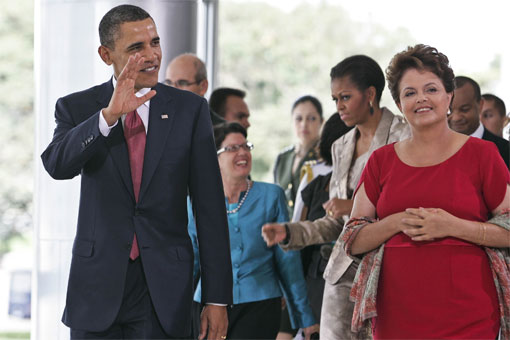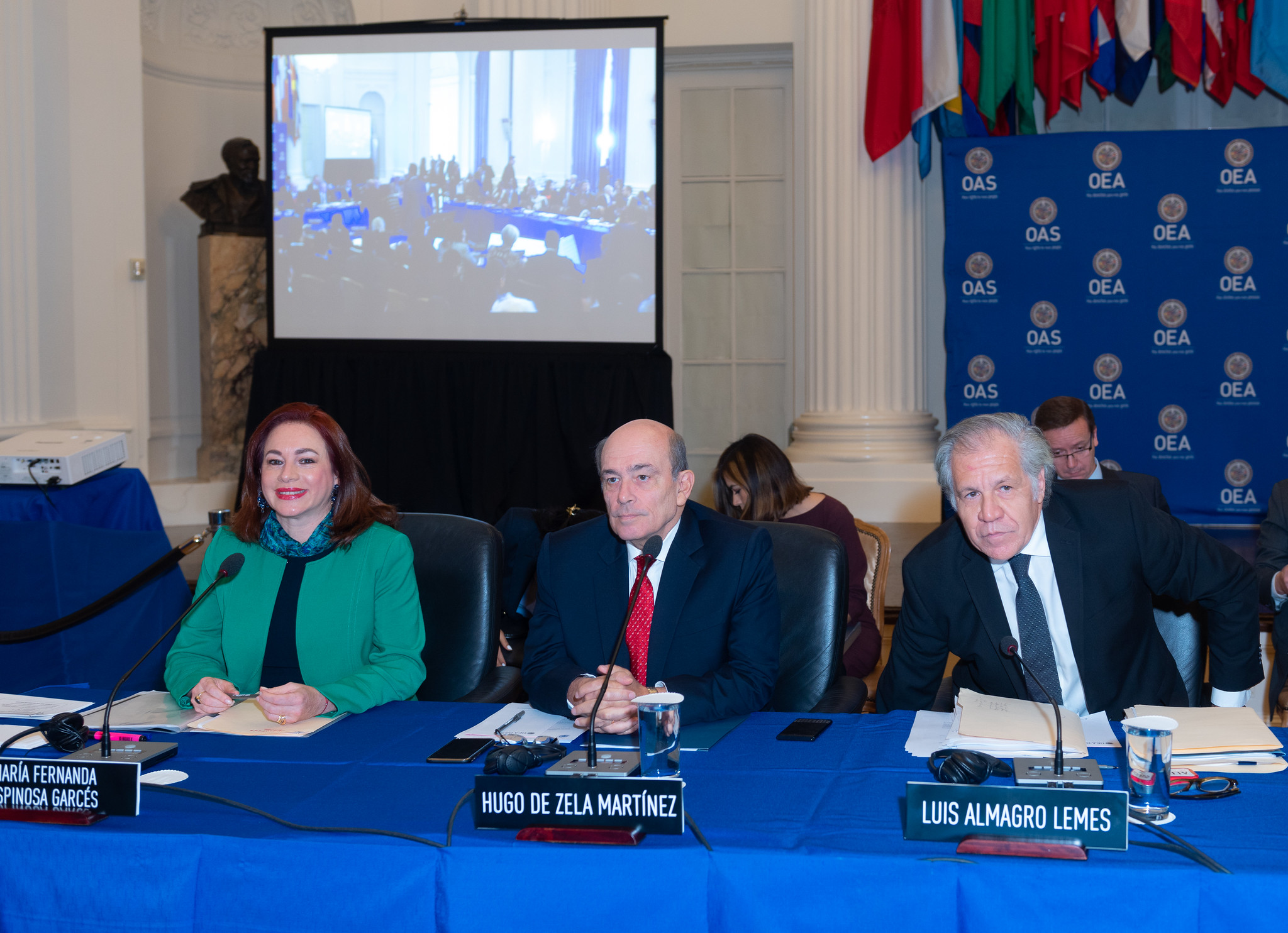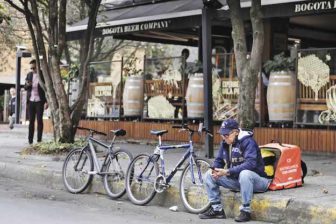Typically, it takes time to gauge the full effect of a presidential visit, and the March visit by President Barak Obama to Brazil, Chile, and El Salvador is no exception. If anything, because of the controversy that ensued over whether Obama should have taken the trip in the first place and because it was his first state visit to the region (previously he had traveled to Trinidad to attend a regional summit), it has taken longer than usual for the dust to settle and get a clear view of what was accomplished, both symbolically and substantively.
Few would quarrel with the fact that the trip was symbolically effective, an objective made easier in this instance by the earthquake, tsunami and looming nuclear crises in Japan and the multilateral decision to militarily defend opposition forces in Libya. These events enabled the Administration to contend in words, as well as in deed, that it was not going to let its important agenda in the region be derailed by troubles elsewhere. Certainly, little can be faulted with Obama’s headline speech in Santiago. It hit all the right notes in acknowledging the economic dynamism of the countries visited, heralding the democratic examples that they offer to the rest of the world, and welcoming their new role as global stakeholders. The photo ops were also a hit with the locals, whether it was of Obama visiting the slums of Rio de Janeiro or the tomb of the murdered Archbishop of El Salvador, Oscar Romero.
The trip’s substantive accomplishments, on the other hand, left a less positive impression, at least with many of the pundits. The agreements reached, although on their own may be laudable, collectively did not add up to an inspiring, coherent strategic approach, even if that ideal has been made less feasible by the increasing diversity of the countries that make up the region. Relative to the Alliance for Progress, which the trip was timed to honor, the Memorandums of Understanding (MOUs) that served as key deliverables for the President’s trip, seem ad hoc, and lacking in synergy and a defining narrative. The MOUs the U.S. signed with Chile included agreements to cooperate on disaster preparedness, research of the peaceful uses of nuclear energy, and on glacier monitoring.
There is also a sense that the MOUs reached with Brasilia, at least, got more fanfare than they deserved since many have yet to be completed and the purported benefits of others may not materialize for months, if not years. The highly touted U.S. Open Skies agreement with Brazil, for example, will require Brazilian congressional approval—not a slam dunk under any circumstances. Moreover, two other highly publicized agreements—the MOUs on maritime transport and tax information exchange—have yet to enter into force. Meanwhile the MOU on Major Global Events aimed at helping Brazil develop the infrastructure and security apparatus needed to host the 2014 World Cup and 2016 Olympics won’t start to pay off materially for U.S. investors until much closer to the date of the events. Eluding the Administration was the one item that would have made the headlines—an announcement that Brazil will buy Boeing F18 planes for its Air Force—although President Obama reportedly did bring up the issue in private discussions with his counterpart, and Administration officials were given reason to be optimistic by Brasilia’s announcement that the contract with Boeing’s French competitors was not final.
Nonetheless, what the visit did is set the table for greater cooperation in years to come, particularly with Brazil. The crucial question is if the positive vibes that were generated can now be transformed into additional momentum for completing the working agenda. The political hurdles cannot be minimized, however. Brazil is a country with which Washington has had periodically tense relations; during the Bush Administration, mostly on account of trade disagreements over the merits of region-wide Free Trade Area of the Americas (FTAA) or some of the positions Brazil took as the head of the Group of 20 developing countries at the WTO negotiations.
Later, during the first two years of the Obama Administration, friction emerged over former President Luis Ignacio Lula’s overtures to Iran, a position from which President Rousseff has distanced herself, much to Washington’s relief. U.S. officials also take heart from the personal chemistry between the two leaders, based in part on their shared, trailblazing political trajectories: Dilma Rousseff as the first female president of Brazil and Barack Obama as the first minority president of the U.S. With the Brazilian president scheduled to visit Washington later in the year, U.S. officials believe the ball is now in Brazil’s court to move forward the relationship.
In El Salvador too, agreements were signed and promises were made as well, but none of them appear to offer any imminent succor to that beleaguered country. For instance, the announcement by President Obama of a $200 million aid package to help the Central Americans in their fight against narcoviolence is conditioned on the region’s leaders’ ability to forge a common counter-narcotics strategy in their meeting in June.
Now What?
Notwithstanding the differences of opinion on what the trip accomplished, some of the concerns that have haunted the Obama Administration’s handling of the region linger. Foremost is the question of how much political capital the Administration is willing to invest in advancing the hemispheric agenda. The consensus view is that the first major test will be securing Congressional approval for Free Trade Agreements with Colombia and Panama—a relatively politically easy hurdle for the White House to overcome since most opposition is found in the ranks of the Democratic Party. However, taking it on will likely mean confronting some anti-trade elements within his own party—no pleasant task given the upcoming 2012 elections.
The more daunting challenge will be meeting Obama’s pledge to El Salvador’s President Funes to get comprehensive immigration reform approved by Congress. Certainly the Administration’s failure to make much of a dent on the high rate of unemployment and get through Congress in 2010 the limited, less controversial DREAM act, which would have provided a path to citizenship for undocumented immigrants who were brought to the U.S. as children, does not bode well for the passage of comprehensive reform in the foreseeable future. That the presidential entourage did not include a single member of Congress should also give President Funes pause as to whether Obama will be able to fulfill this pledge.
Another lingering concern is whether Obama’s Latin American team has the imagination and creativity to come up with grander goals for the region and the strategies to attain them. The reluctance of the President’s Latin American team to welcome outside counsel has also hampered its ability to build broad-based support and foster new ideas. Surely, the relatively mundane MOUs with Brasilia leave doubt whether the agenda that the Administration is promoting befits Brazil’s new, more prominent role on the world stage.
Although many of the concrete results of the trip will take a while to determine, the trip has served as a point of reference for those who follow the relationship, and it has helped to better define the metrics to judge the Administration’s Latin American policy. Specific promises were made and the stated goal of opening a new chapter in Washington’s engagement with the region based on “mutual respect, common interests, and shared values” will keep expectations high.
The optimists, including the President’s Latin American team, believe the trip will serve as a preamble of greater substantive accomplishments to come in Washington’s relations with the region, and not mark a high point based merely on public relations successes. If true, they have their work cut out for them, and only 18 months to get it done. On the other hand, if they don’t rise to the challenge and invest the necessary political capital, Obama’s will go down in the history books as just the latest in a long string of administrations that peddled hope and new beginnings with our Latin neighbors in the course of a visit or two only to disappoint in the end.






